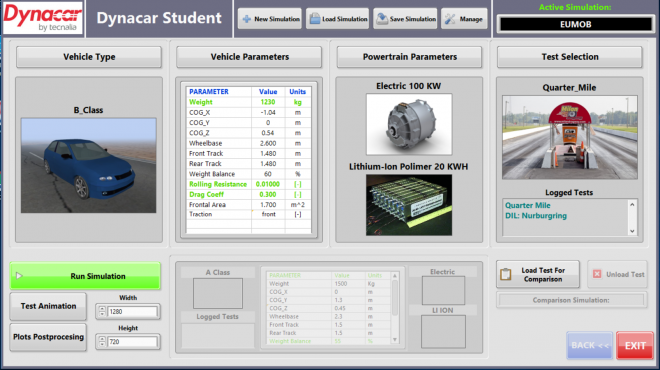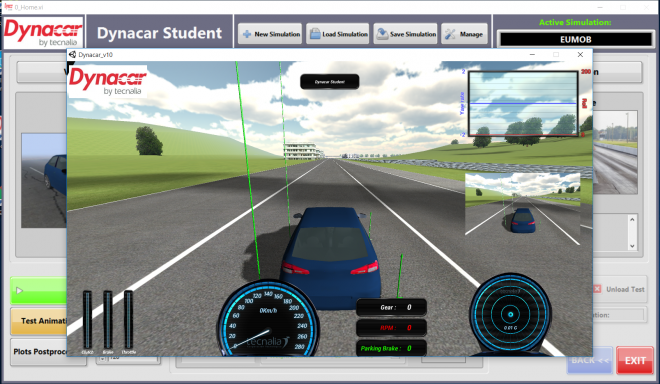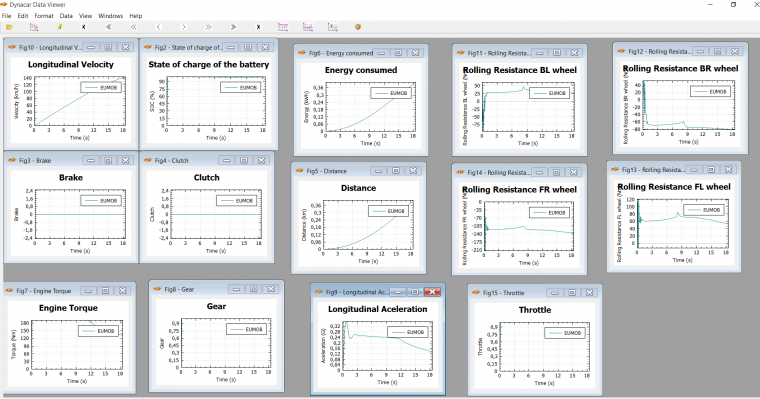6.0 - Dynacar
Simulate the experience of driving an electrical vehicle and adjust many different parametres such as mileage, speed, weight etc. etc. in order to test the output and efficiency of the batteries for example.
Chapters
1.0 - Dynacar
2.0 - Test your Knowledge
System and components
DYNACAR Student is a powerfull and flexible environment developed by Tecnalia, that allows VET automotive student, models, simulate and compare electric design (EV) with tradiditional ICE engines.
Resume features of the tool are:
- DYNACAR allows generate a Vehicle model, using the graphic interface with and advanced virtual environment. User can select Vehicle type. (From A class vehicle to VAN class). Main parameters (Weight, rolling resistance, drag Coeeficient). Powertrain Parameters (Electric Motor and batteries in case EV vehícle)

- After modeling vehicle, DYNACAR allow us to RUN SIMULATION, over a test cirucit (A Quarter Mile or DIL:Nurburgring), that is supported by a driver simulator. It allows students to drive an EV vehicle with a G27 racing wheel as a video console-game.

- Finally, after that DYNACAR generates a PostProccesing plots, with main features of the simulation such as:
- Energy consumed
- Distance
- Engine Torque
- Longitudinal acceleration
Students can save simulation, and later compare in the same graphics with another simulation. This makes a powerfull tool to compare alternative engines (EV vehicles) with traditional engines.

Conclusions
DYNACAR is a powerful tool to make an approach to EV models and compared with traditional engines. Students not only can simulate these new models and drive them as it was a video console game but obtain and anlyze main postpocessing graphics. All of these suits perfectly to some of the main objectives of the project:
- Create awareness in the younger generation and society about the importance of new efficient and clean mobility systems in urban environments.
- Give comprehensive training to young people, in the area of electric urban mobility, not only focusing on new hybrid and electric engines, but also on their impact on mobility and society
